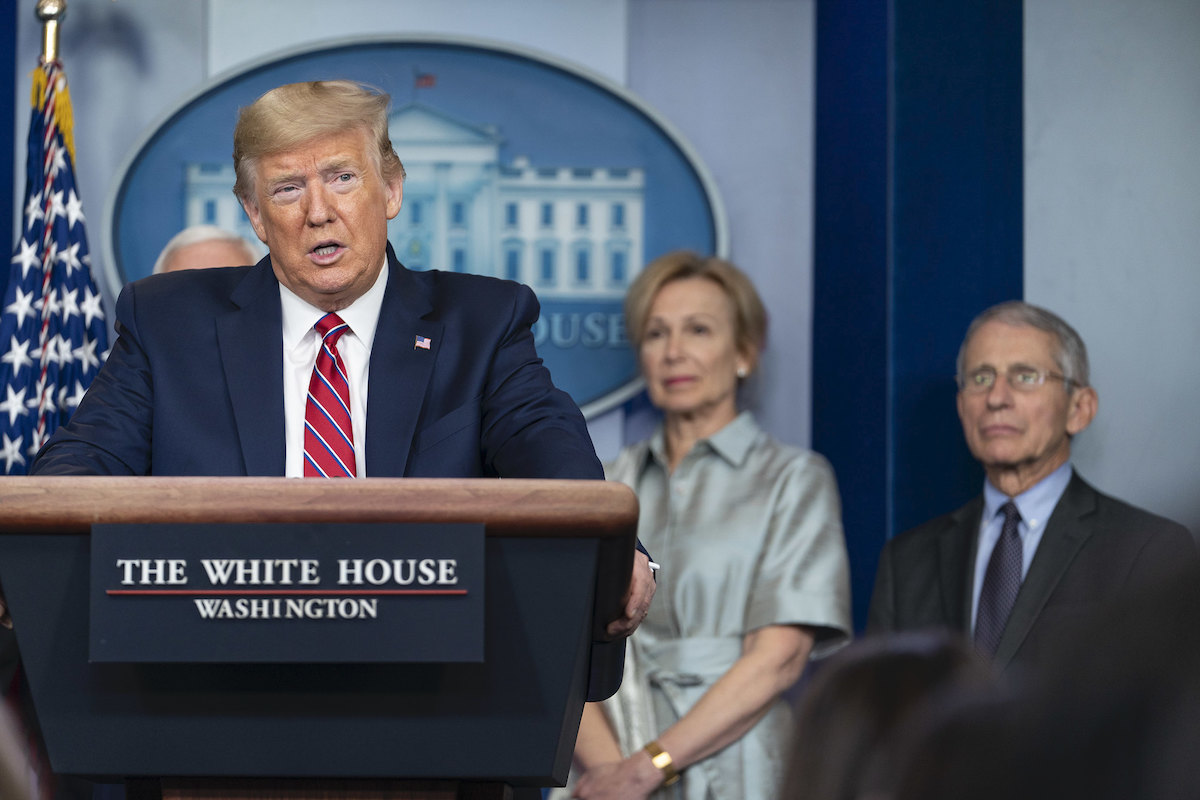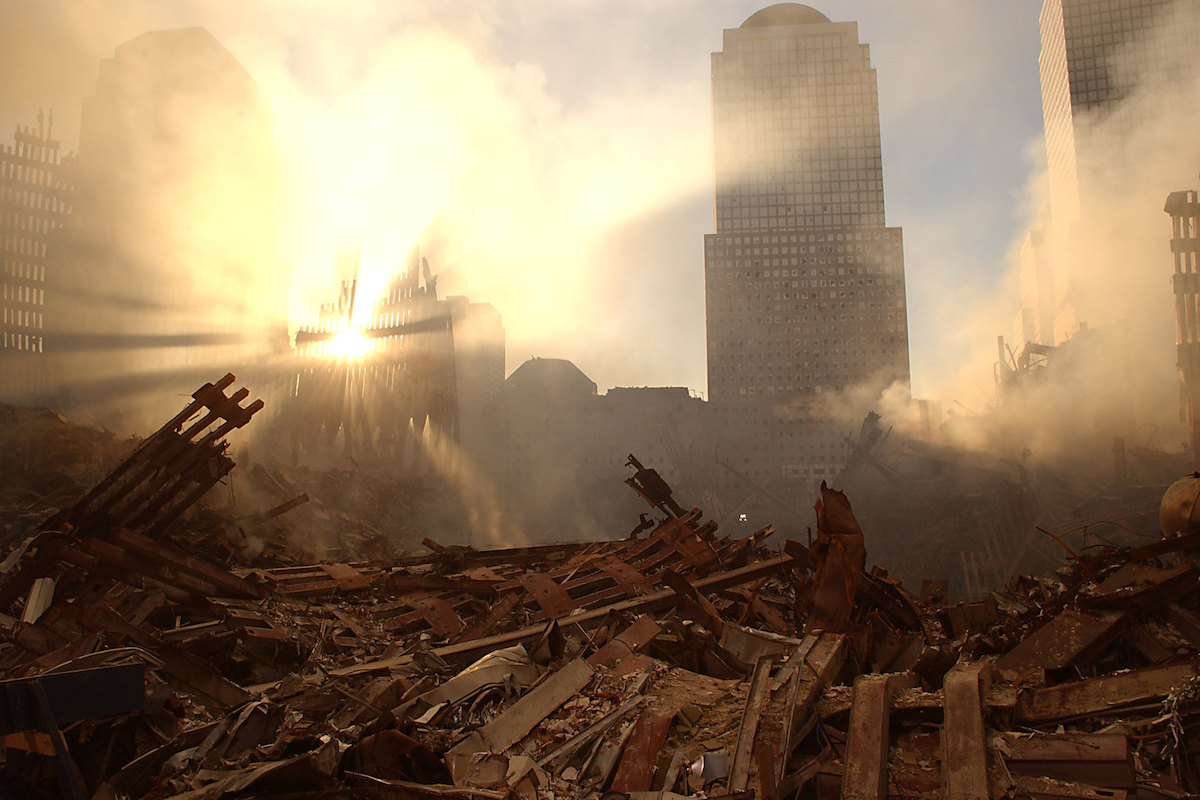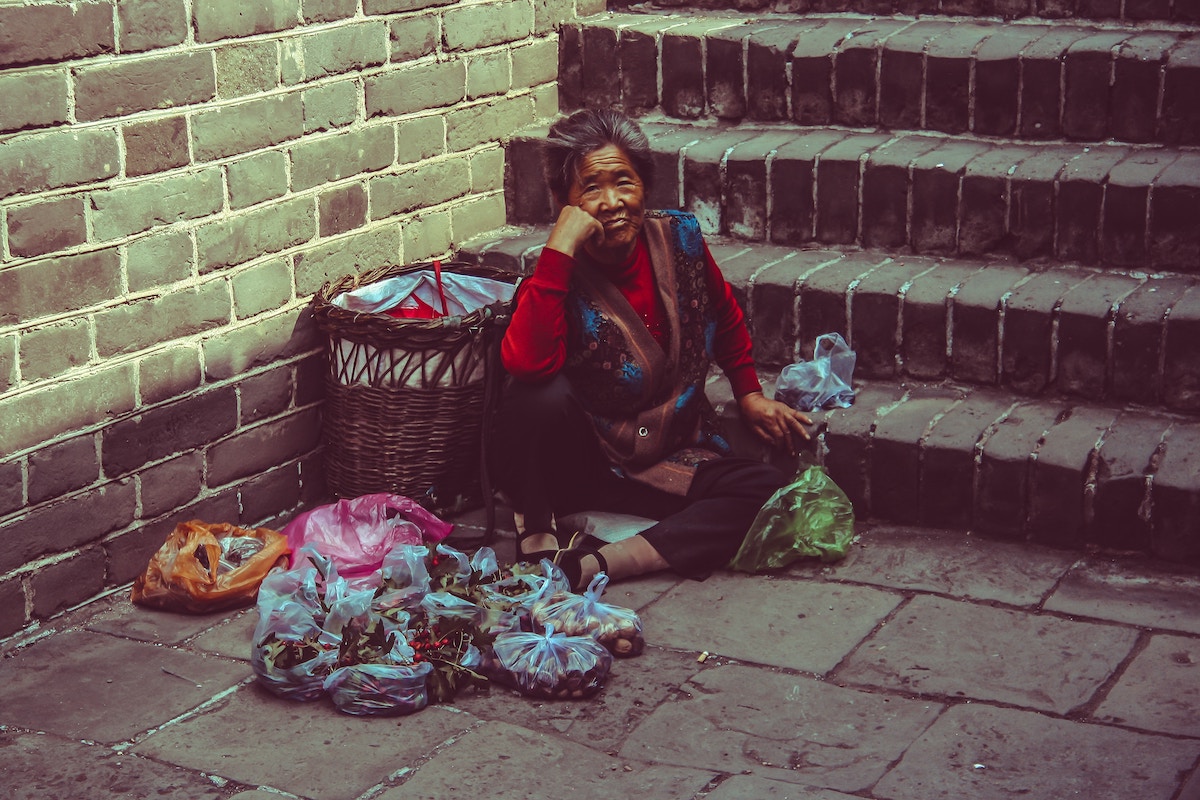
Long after the pandemic has receded, its long-term impact on our society and political life will continue. Just as plagues past have reshaped the trajectory of cities and civilizations, sometimes with fearsome morbidity, COVID-19 is already having a profoundly disruptive impact on our political future.
Rather than uniting humanity against a common foe, the pandemic seems to be widening the internal political chasm between nations and within them. The “battle,” “war,” or “crusade” against the novel coronavirus has not to date reprised the London Blitz, Pearl Harbor, or the World Trade Center attack in 2001, during which people closed ranks, even if they thought little of their country’s leaders.

Democrats like party strategist James Carville and Speaker Nancy Pelosi insist that Trump has “blood on his hands” and one of Pelosi’s more excitable colleagues has suggested that Trump be tried in The Hague for his handling of the pandemic. On the Right, meanwhile, the pandemic has engendered, in the US and elsewhere, a predictably anti-China and nativist tone, which have sometimes drifted into overt racism, particularly in Italy. Some journalists toss around terms like “Manchurian media,” a regrettable throwback to McCarthyism.
This is no way to handle a global pandemic. Most Americans, according to a recent survey, would prefer a more collaborative approach. They have so far been disappointed. At a time when we need a rational discussion of policy alternatives and a thoughtful debate among experts, including not just epidemiologists, but also economists, psychologists, and social scientists, we are seeing an escalation of finger-pointing, blame-shifting, and character assassination from both sides.
The globalized politics of the pandemic
Throughout history, pandemics have periodically devastated great cities like Rome, Constantinople, and Cairo. Repeated exposure to sickness slowed the recovery of European cities throughout the Middle Ages and ravaged the great cities of the Renaissance. Diseases imported from the West devastated the once proud cities of Meso-America and Peru, making them more easily overcome by the Hispanic conquistadors.1 Later on, the disease-ridden slums of the industrial age helped to spark socialist insurrections almost everywhere, and in Russia, at least, to grievous political effect.
Today’s global pandemic is far less lethal, but it is rearranging global politics nonetheless, most obviously through the growing conflict between the world’s two dominant powers, China and the United States. The conservative press, President Trump, and Boris Johnson have blamed China for the pandemic. In response, Beijing claims their approach has been more successful, and demonstrates that authoritarians are able to deal with crisesmore efficiently than less ordered and obedient Western democracies.
We should, of course, be skeptical about any pronouncement from a totalitarian state which appears to have bungled and then concealed the origins of COVID-19. The Chinese Communist Party, after all, lied to the world about a famine that killed as many as 45 million people, a topic that remains taboo in China’s academic or media circles. The regime’s apparent attempts to suppress research on the virus origins are certainly consistent with past behavior.
In Europe and America, the dangers of ceding global leadership to the Chinese are now readily apparent. Increasingly, American, Japanese, and European firms are looking to move operations out of China. The “global framework” that emerged in recent decades is fragmenting, making it increasingly clear that henceforth the world will likely function in pieces. The pandemic seems to be accelerating a return to a bipolar balance of power, with the United States and its allies pitted against China and its vassal states, notably in the developing world.
The new regional divides
The pandemic has also widened divides within countries, particularly between the great core cities and everywhere else. Historian William Mitchell had observed that this recalls the experience of great cities like Venice during the Renaissance, which suffered far more grievously from the era’s waves of pestilence than relative backwaters in central Europe and Poland.2 Many of the things that made cities great, then and now, such as exposure to foreign trade and immigration, also tended to accelerate the spread of pandemics, particularly those coming from the East.

In this pandemic, virtually all the COVID-19 hotspots to date have been dense, urban areas. In Australia, nearly two-thirds of those hospitalized live in heavily urbanized New South Wales, notably around Sydney. Similarly, in Canada, the most severe outbreaks have occurred in the urban centers of Quebec and Ontario, while the country’s vast central and western expanses have been considerably less affected. In the United Kingdom, more than a quarter of infections, and one-third of hospitalizations, have occurred in and around London. In France, Paris and the industrial north-east represent a clear majority of cases. Half of all recorded COVID-19 cases in Spain have occurred in Madrid, while the Milan region accounts for half of all cases in Italy and almost three-fifths of the deaths.
The geographic differentials are equally stark in the United States. At the end of last week, according to the Johns Hopkins virus dashboard, New York City, a city with less than three percent of the national population, accounted for 19 percent of the country’s COVID-19 infections and 31 percent (over 5,000) of the deaths. New York is home to 80 percent of all ultra-dense neighborhoods and remains by far the most transit-dependent city in North America.
Unsurprisingly, much of the New York-based media insist that the virus will spread everywhere and that red state governors and politicians are lost in a kind of Trumpian haze. There seems to be a growing movement among some Democrats, including Joe Biden, to uniformly employ, and even expand, the present approach until June, or as Biden’s top medical advisorrecently suggested, even for as long as 18 months.
This does not seem congenial to more rural states. Outside of ski resorts and Native American reservations, these states have so far managed to avoid the worst impact of the pandemics. For now at least, states like Iowa, Nebraska, and South Dakota have among the lowest rates of COVID-related deaths in the country, roughly one-fortieth the rate of New York. These divisions have been so stark that some states have tried to keep people from high-infection areas from entering their states.
Such regional disagreement may presage future political battles across much of the world. People in the British Midlands, the French périphérique, and the US Midwest or Mid-South, may feel justified in lifting the harshest restrictions while places like New York or New Orleans feel compelled to extend their lockdowns.
This geographic gap reflects differences between how people live and make their livelihoods. People in more rural states generally have less contact with international travelers. More people own homes and drive to work rather than living in crowded apartment buildings and using a public transit system. Many in the hinterlands work in factories, warehouses, farms, mines, and the energy sector. Workers in these industries cannot always “separate” like those who keystroke for a living. Nor are they likely to endorse policies, now espoused by some progressives, particularly the greens, designed to take advantage of the pandemic to “demobilize the economy,” essentially eliminating their jobs and crushing their own self-employment, to fight both the virus and climate change.
How the pandemic accentuates class conflict
Since classical times, pandemics have visited their worst impact on the poor. Living in crowded conditions, often with poor sanitation, the poorest inhabitants of big cities lacked country estates to which they could escape and often had less access to medical care. As the French historian Fernand Braudel noted, there was a “separate demography for the rich”; diets and survival rates varied enormously between the upper classes and everyone else. Of course, some of the mighty also died, but rates were far lower than among hoi polloi.3
These conditions persisted through the early stages of the industrial revolution, and were movingly described in Fredrich Engels’ The Condition of the Working Class in England. Mortality rates in the city were three times higher than in the surrounding countryside, making it dependent on infusions from the hinterlands and Ireland.4 As industrial growth spread, similarly appalling conditions emerged in Western Europe, North America, and eventually Russia. In many countries, the Spanish flu—which claimed 50 million lives—hit poor working class areas far more heavily than affluent ones, and eventually helped spark major reforms in sanitation throughout the urbanized world.
This history is now repeating itself. This new coronavirus originated in Wuhan, a heavily industrial city with a long history of health problems. In the early days of the pandemic, these problems were likely exacerbated, notes University of Leeds researcher Li Sun, among migrant workers who were not properly covered by health insurance. Crowded conditions, poor ventilation, a lack of sunlight—the very things described by Engels—still persist in large parts of China’s great cities and link to earlier pandemics like SARS.

Whereas it is hard to get reliable data out of China, the class implications of the pandemic are clear throughout the West. A map of infections in New York City reveals that it is not the Manhattan high-rises or “brownstones” in Brooklyn that have been hardest hit, but the dense, transit-dependent working class areas in central Queens (home to New York’s largest Chinese community), impoverished and crowded east Brooklyn (my mother’s native terroir), and the Bronx. Outside New York, the most deaths have been recorded in central cities such as New Orleans and Detroit, where the vast majority of deaths have befallen African Americans.
The lockdowns have impacted different classes differently. Among the hardest hit have been high street merchants, which were already reeling from competition from online competitors like Amazon. The rapid shift to online ordering works better for Wall Street-funded chains than for independent family businesses. According to the JP Morgan Institute, 50 percent of small businesses have a mere 15 days of cash buffer or less. If the shutdown lasts much longer, as many as three-quarters of independent restaurants simply won’t make it. This may be made worse, at least in the United States, by a recovery plan that even the Wall Street Journal admits is “putting Wall Street ahead of companies across Middle America.”
But things are even bleaker for the generally low-wage and often youngeremployees in shuttered retail establishments. Gig workers in Britain, notes the London School of Economics, lack sick leave or any protections against layoffs and so are particularly vulnerable. So too are their Canadian counterparts, notes the Conference Board of Canada. In the United Kingdom and elsewhere, large urban populations are at greater risk of serious illness and death from COVID-19 due to the prevalence of underlying conditions such as diabetes, hypertension, and obesity.
At the same time, working class people are far less likely than more affluent professionals to be able to work from home, and, to date, they report a far higher incidence of pay cuts and layoffs. Already almost a third of all rentersin the US may not be able to make their payments this month, a trend likely to continue as long as the lock-down continues. Even those who have not lost their jobs often work in conditions susceptible to the highest risk of infection, due to unavoidable “density exposure” in factories, warehouses, and medical facilities. Fraught health conditions have led to strikes and protests by workers in the Instacart delivery service and among Amazon warehouse workers.
Some suggest these conditions could help ignite working class activism and perhaps even a revival of unionization. At the very least, the pandemic has exposed our dependence on working class people which might—and should—incentivize reform of the living conditions, salaries, and benefits of those who kept society moving through the crisis.
COVID-19 and the future of politics
In the coming months, the real political “hot potato,” in the United States and elsewhere, will be when to start re-opening the economy. This may well be a recurrent theme over the next few years, as societies, in the words of Hong Kong epidemiologist Gabriel Leung, “hit the brakes and release them” in response to shifts in the pandemic.
In Europe, the virus has widened the gap between the harder hit countries in southern Europe such as Italy, France, and Spain, and countries like Germany, the Netherlands, Denmark, Austria, the Czech Republic, and Sweden which have so far been less severely hit, and some of which are already planning to relax their lockdowns. The re-appearance of borders and outbreaks of infighting testifies to the reality of an ever-weaker European Union.
Similar fights will emerge in America, where the wage protections common in Europe are not widely available, and small businesses are threatened by unrestrained Wall Street speculation. There is already rising concern among Americans about finances that could lead some governors to relax the more extreme lockdown policies. Particularly critical to Trump will be his success in rescuing small businesses, arguably his strongest support base. Such moves are fraught with risk and uncertainty, and in a situation that offers no good options, whatever state governors and the federal government decide will undoubtably be bitterly contested.
No matter what emerges, the political fallout from the virus won’t be pretty. So far, we have been unable, at the global or national level, to come together to meet this common threat. Instead, we have seen an escalation of the polarization and nastiness emblematic of this sad era, which has only made it harder to confront this most pressing of dangers.
References:
1 William McNeil, Plagues and Peoples, (Garden City, NY, 1976). pp.2, 13, 207, 208
2 Ibid. pp.181–2
3 Barbara Tuchman, A Distant Mirror: The Calamitous 14th Century, (New York: Knopf, 1978), p. 97
4 Fredrich Engels, The Condition of the Working Class in England, translated by W.O. Henderson and W.H. Chaloner, (Stanford, CA: Stanford University Press, 1969), pp.67–71






